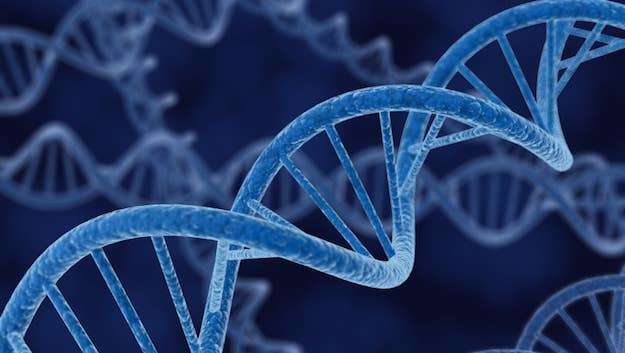Create a free profile to get unlimited access to exclusive videos, sweepstakes, and more!
Some of our DNA functions exactly like a sea sponge’s, which could solve a genetic mystery

Of all things, a jelly-ish sea sponge is giving scientists more insight into an elusive part of the human genome.
This isn’t a horror movie about some hybrid gone wrong. We actually share important genetic mechanisms with these creatures (however unlikely that sounds). What could we possibly have in common with amorphous blobs that don’t even have a brain? The same sections of DNA “instructions” that control gene expression, which are hard enough to find and even harder to understand, exist in both humans and, yes, sea sponges. These sequences have never previously been found alone. Now a team of researchers are finding out more about how this mysterious mechanism has been programming animal DNA for 700 million years.
Enhancers are rapidly evolving segments of DNA that help regulate how genes are expressed. They determine gene expression that is specific to cell type depending on the species. University of New South Wales scientist Emily Wong, who recently led a study published in Science, has been able to prove that enhancers have been part of the human genome — and most animal genomes — since long before any dinosaur ever set foot on Earth.
“We have short sequence motifs in common with the sponge, and these control similar genes,” Wong tells SYFY WIRE. “These sequences are important because they switch on and off and fine-tune genes. What is remarkable is that, despite our cells being completely different from the sponge, we still have these similar parts in common.”
Wong and her team didn’t have to look far for sponges. Being in Australia helps when you have the Great Barrier Reef right there, and they brought the sponges they collected back to the lab and extracted DNA from them. This DNA was then injected into one cell from a zebrafish embryo. This was done with hundreds more zebrafish embryos, without any zebrafish being harmed in the process, and pieces of human and mouse DNA were also injected. Even though sponges and humans seem to have nothing in common, with sponges still being much more primitive after hundreds of millions of years, Wong’s team saw the same enhancers in both.
There is a reason enhancers are known as genetic “dark matter.” Most genes take their time evolving and are much more easily identifiable when genomes are compared. Enhancers evolve so fast that if scientists search for one, they might think you know what they are searching for when it has already changed into something else. Wong had to think quickly to outsmart them.
“We used a couple of tricks to overcome this issue,” she said. “By looking for genes that have maintained similar locations in the genome over time, we can narrow down the regions of the genome to search for preserved enhancers, reducing the search space.”
Because every single one of our cells has the same genome, we need enhancers to further shape them into what they are going to function as. Skin cells are no different than the cells that make up any other organ. The team worked with a prehistoric gene that plays a vital role in both our nervous system and heart. What differentiates cells and gives them their own identity is the way in which their genes are expressed, and this is where enhancers come in. Without them, every cell would end up being the same, and we would probably look like giant shapeless amoebas.
“Enhancers are important in determining where and when genes are expressed,” Wong said. “Comparing sponges to vertebrates shows us that these regions evolve in a way that was not previously anticipated, and so we need to find new ways to better understand them.”
This could be a breakthrough for treating genetic diseases. Even though we are still a long way from that, better interpretation of the human genome could mean understanding more about enhancers. Right now, we aren’t even close to knowing everything about our own genome. Enough information could lead to finally figuring out what switch gets turned on when a certain genetic disease occurs. If we could find a way to make the enhancers function differently and hit a different switch, that might be the answer. They just keep morphing so fast that any scientist trying to unlock that is going to have to work quickly. Wong is determined to keep up.
“Most disease-causing variants are at regions in the genome comprised of this 'dark matter,' so there is a need to understand how they function and evolve from that perspective,” she said.
Think about that next time you shower with a loofah.


























